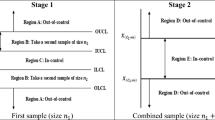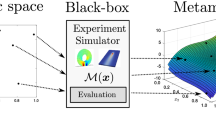Abstract
Benchmarking of spatio-temporal databases is an issue of growing importance. In case large real data sets are not available, benchmarking requires the generation of artificial data sets following the real-world behavior of spatial objects that change their locations, shapes and sizes over time. Only a few innovative papers have recently addressed the topic of spatio-temporal data generators. However, all existing approaches do not consider several important aspects of continuously changing regional data. In this report, a new generator, called generator of time-evolving regional data (G-TERD), for this class of data is presented. The basic concepts that determine the function of G-TERD are the structure of complex 2-D regional objects, their color, maximum speed, zoom and rotation-angle per time slot, the influence of other moving or static objects on the speed and on the moving direction of an object, the position and movement of the scene-observer, the statistical distribution of each changing factor and finally, time. Apart from these concepts, the operation and basic algorithmic issues of G-TERD are presented. In the framework developed, the user can control the generator response by setting several parameters values. To demonstrate the use of G-TERD, the generation of a number of sample data sets is presented and commented. The source code and a visualization tool for using and testing the new generator are available on the Web.1 Thus, it is easy for the user to manipulate the generator according to specific application requirements and at the same time to examine the reliability of the underlying generalized data model.
Similar content being viewed by others
References
T. Abraham and J.F. Roddick. “Survey of spatio-temporal databases,” Geoinformatica, Vol. 3(1):61-99, 1999.
K.K. Al-Taha, R.T. Snodgrass, and M.D. Soo. “Bibliography on spatiotemporal databases,” International Journal of Geographical Information Science, Vol. 8(1):95-103, 1994.
D. Bitton, D.J. DeWitt, and C. Turbyfill. “Benchmarking database systems: a systematic approach,” Proceedings 9th VLDB Conference, 8-19, Florence, Italy, 1983.
T. Brinkhoff. “Generating network-based moving objects,” Proceedings 12th International Conference on Scientific and Statistical Database Management (SSDBM'00), 253-255, Berlin, Germany, 2000.
T. Brinkhoff. “A Framework for generating network-based moving objects,” Geoinformatica, Vol. 6(2):153-180, 2002.
M.J. Carey, D.J. DeWitt, and J.F. Naughton. “The OO7 benchmark,” Proceedings 1993 ACM SIGMOD Conference, 12-21, Washington, DC, 1993.
M.H. Dunham, R. Elmasri, M.A. Nascimento, and M. Sobol. “Benchmarking temporal databases a research agenda,” Technical Report 95-CSE-20, Department of Computer Science and Engineering, Southern Methodist University, December 1995.
O. Guenther, P. Picouet, J.-M. Saglio, M. Scholl, and V. Oria. “Benchmarking spatial joins a la carte,” International Journal of Geographical Information Science, Vol. 13(7):639-655, 1999.
C. Gurret, Y. Manolopoulos, A. Papadopoulos, and P. Rigaux. “BASIS: a benchmarking approach for spatial index structures,” Proceedings Workshop on Spatiotemporal Database Management (STDBM'99), 152-170, Edinburgh, Scotland, 1999.
J. Gray (ed.). The Benchmark Handbook for Database and Transaction Processing Systems, Morgan Kaufmann, 2nd edition, 1993.
Y. Manolopoulos, Y. Theodoridis, and V.J. Tsotras: Advanced Database Indexing (Chapter 7: Spatiotemporal Access Methods), Boston, Kluwer Academic Publishers, 1999.
M.A. Nascimento, J.R.O Silva, and Y. Theodoridis. “Evaluation for access structures for discretely moving points,” Proceedings of the International Workshop on Spatio-Temporal Database Management (STDBM'99), 171-188, 1999.
The Open Source Initiative. http://www.opensource.org, valid as of June 2001.
J. Pei, R. Mao, K. Hu, and H. Zhu. “Towards data mining benchmarking: a testbed for performance study of frequent pattern mining,” Proceedings 2000 ACM SIGMOD Conference, 592, Dallas, TX, 2000.
D. Pfoser and Y. Theodoridis. “Generating semantics-based trajectories of moving objects,” Proceedings Workshop on Emerging Technologies for Geo-Based Applications, Ascona, Italy, 2000.
M. Stonebraker, J. Frew, K. Gardels, and J. Meredith. “The Sequoia 2000 Benchmark,” Proceedings 1993 ACM SIGMOD Conference, 2-11, Washington, DC, 1993.
T. Sellis, M. Koubarakis et al. (Eds.). Spatiotemporal Databases—the Chorochronos Project, Springer Verlag (LNCS series), in print.
J.-M. Saglio and J. Moreira. “Oporto: a realistic scenario generator for moving objects,” Geoinformatica, Vol. 5(1) 71-93, 2001.
M.D. Soo. “Generating temporal data: a white paper,” Technical Report, Department of Computer Science and Engineering, University of South Florida, 1997.
Y. Theodoridis and M.A. Nascimento. “Generating spatiotemporal datasets on the WWW,” ACM SIGMOD Record, Vol. 29(3):39-43, 2000.
Y. Theodoridis, J.R.O. Silva, and M.A. Nascimento. “On the generation of spatiotemporal datasets,” Proceedings 6th Symposium on Spatial Databases (SSD'99), 147-164, Hong Kong, China, 1999.
Y. Theodoridis, T. Sellis, A. Papadopoulos, and Y. Manolopoulos. “Specifications for efficient indexing in spatiotemporal databases,” Proceedings 7th Conference on Statistical and Scientific Database Management Systems (SSDBM'98), 123-132, Capri, Italy, 1998.
T. Tzouramanis, M. Vassilakopoulos, and Y. Manolopoulos: “Multiversion linear quadtree for spatiotemporal Data,” Proceedings 4th East-European Conference on Advanced Databases and Information Systems (ADBIS-DASFAA'00), 279-292, Prague, Czech Republic, 2000.
T. Tzouramanis, M. Vassilakopoulos, and Y. Manolopoulos: “Overlapping linear quadtrees and spatiotemporal query processing,” The Computer Journal, Vol. 43(4):325-343, 2000.
T. Tzouramanis, M. Vassilakopoulos, and Y. Manolopoulos: “Time split linear quadtree for indexing and querying image databases,” Proceedings 8th International Conference on Image Processing (ICIP'01), Thessaloniki, Greece, 2001.
J. Zobel, A. Moffat, and K. Ramamohanarao: “Guidelines for presentation and comparison of indexing techniques,” ACM SIGMOD Record, Vol. 25(3):10-15, 1996.
Author information
Authors and Affiliations
Rights and permissions
About this article
Cite this article
Tzouramanis, T., Vassilakopoulos, M. & Manolopoulos, Y. On the Generation of Time-Evolving Regional Data*. GeoInformatica 6, 207–231 (2002). https://doi.org/10.1023/A:1019705618917
Issue Date:
DOI: https://doi.org/10.1023/A:1019705618917




